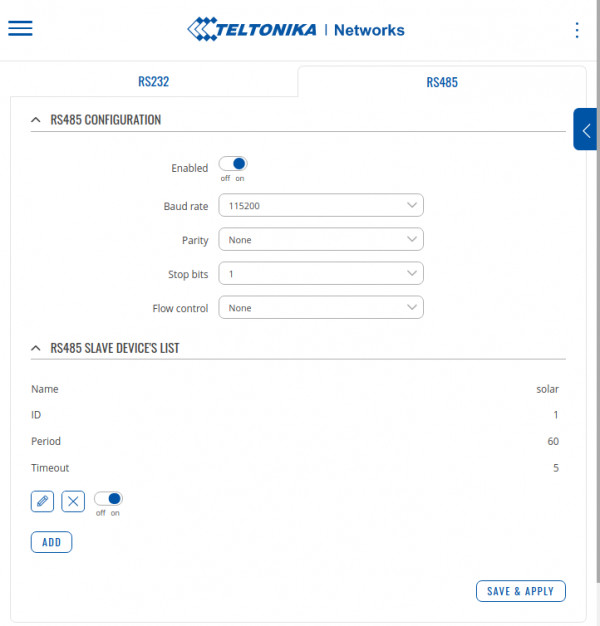Hi
I have a TRB245 (FW TRB2_R_00.02.06.1) that I'm trying to interface to a Modbus slave using RS485.
The slave device is an EPEVER solar charge controller that I have worked with previously. I've designed a PCB for an interface to it before, so I know the RS485 settings and wiring, and I know that the unit works. This is a two-wire device, so I've bridged the D+ and R+, and D-/R- connections. I also have a 120R terminator resistor in place. I believe I've wired up as per the wiki page, here's the connector:

I've configured the TRB245 Modbus/RS485 settings, and added a couple of registers that I would like to query, but unfortunately no joy. When trying to test the "requests" I get the message: "No response from slave device, check wiring and configuration".
Here are the config pages:


The other RS485 service is disabled.
What have I missed?
Cheers,
Al